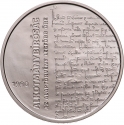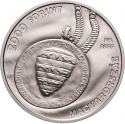You are about to finish your registration. Please check your mailbox (including spam folder). There should be a letter with a confirmation link. Check setting to make sure that your e-mail address is correct.
Send letter againDescription
The Constitutional Court of Hungary, established during the regime change as a constitutional reform, is modeled primarily after Germany's system. It protects individual rights against potential legislative overreach, ensuring the constitutional state’s principles are upheld. The Court was officially founded on October 19, 1989, and began operations on January 1, 1990, with its initial seat in Esztergom. The Court's fifteen members, elected by Parliament for twelve-year non-renewable terms, must possess either outstanding theoretical legal knowledge or at least twenty years of professional legal experience. The Court's creation and functions were a result of tripartite political reconciliation talks, and its role is to promote a state governed by the rule of law while safeguarding constitutional order and fundamental rights.
Engraver: Balázs Bitó
Obverse

|
Depicts a detail of the authentic copy of the Golden Bull from around 1318. To the left of the depiction, in two vertical lines, are the inscriptions "CONSTITUTIONAL COURT" and "THE SUPREME PROTECTOR OF THE CONSTITUTION." At the bottom of the left edge is the founding year "1990" is visible. 1990 |
|---|---|
Reverse

|
Depicts a detail of the chain worn by constitutional judges, featuring a medallion shaped like the seal of the Golden Bull. Around the edge, in a circular inscription, the denomination and the word "FORINT" are on the top left, and the word "HUNGARY" is on the bottom right. Above it in two lines, are the mint mark "BP." and the year of issue "2020." The engraver's privy mark is located on the bottom left edge. 10000 FORINT |
| Edge |
Repeats the inscription on the obverse in Latin: "The Constitutional Court is the supreme protector of the Constitution." CURIA CONSTITUTIONALIS SUPREMUS PROTECTOR CONSTITUTIONIS EST • |
Related coins
30th Anniversary of the Constitutional Court of Hungary



